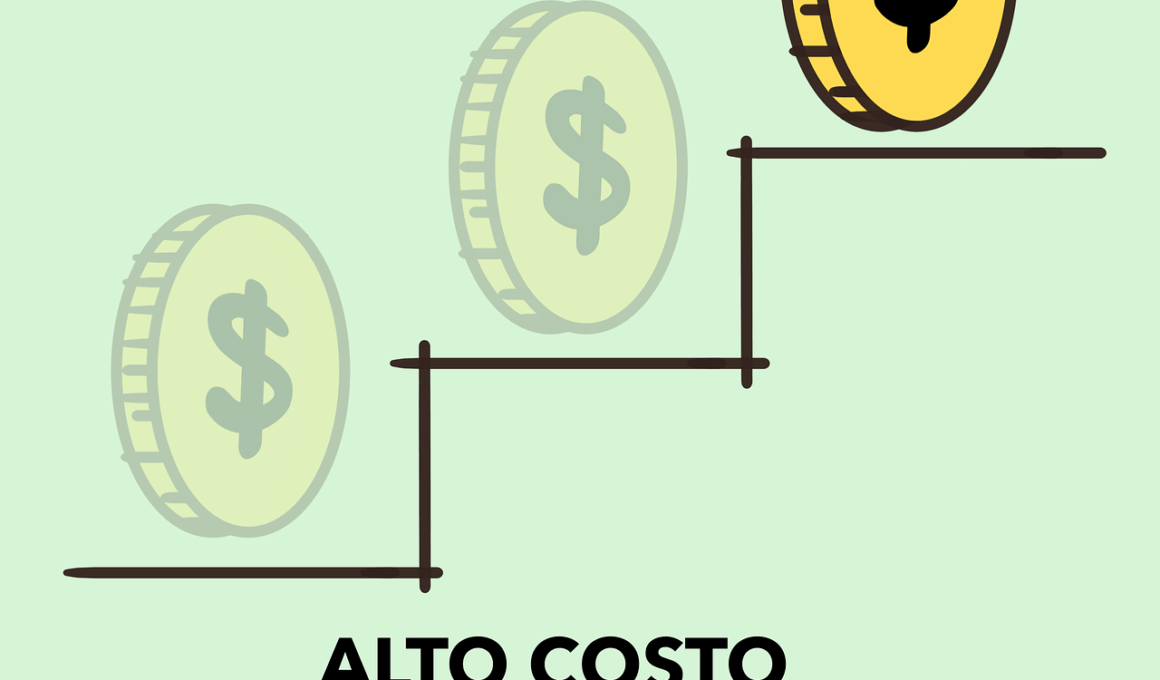Differential Costs: Understanding Incremental Change
Differential costs, often referred to as incremental costs, are crucial elements in cost accounting that assist businesses in making informed operational decisions. These costs represent the difference in total costs when a company chooses one alternative over another. When evaluating options for project implementations, understanding these costs allows management to gauge the financial implications associated with different paths. For instance, in production, if a company considers adding a new product line, the differential costs will include direct costs such as materials and labor needed specifically for that product. Additionally, indirect costs may also be evaluated. Identifying incremental costs can lead to improved resource allocation and financial forecasting for future projects. Evaluating differential costs involves analyzing both fixed and variable costs associated with the alternatives. By focusing on future costs, businesses can assess the profitability of potential strategies. Without a clear understanding of differential costs, organizations might face challenges in budgeting or strategic planning. Ultimately, differential costs play a vital role in helping companies optimize performance and achieve operational efficiency by illustrating the financial impact of their decisions.
Significance of Differential Costs in Decision Making
Understanding the significance of differential costs is essential for strategic decision-making processes. Differential costs highlight the financial consequences facing management when selecting between different options. This knowledge supports companies in prioritizing investments that demonstrate favorable incremental returns. It allows teams to evaluate various scenarios and choose the most cost-effective path forward. For example, when deciding whether to manufacture in-house versus outsourcing production, analyzing differential costs facilitates understanding the trade-offs between maintaining control and incurring contractual expenses. Efficient cost management hinges on understanding how each choice impacts the bottom line. Managing expenses through this lens leads to more informed decisions, ensuring resources are allocated effectively. In sectors where margins are tight, recognizing differential costs provides a competitive advantage by streamlining production and enhancing profit margins. Additionally, it enables organizations to pinpoint areas that require cost reduction or reevaluation. Thus, integrating differential cost analysis into budgeting, forecasting, and performance reviews ensures a consistent alignment between organizational goals and resource utilization. Ultimately, businesses that leverage this approach are better positioned to navigate complexities in today’s ever-evolving market landscape.
To accurately calculate differential costs, one needs to identify relevant costs that vary depending on the decision at hand. For effective calculations, distinguish fixed costs from variable costs. Fixed costs typically remain unchanged regardless of the choice, while variable costs fluctuate with production levels or activity. In a decision-making context, only those costs that change as a result of a decision should be included. Furthermore, sunk costs should not be included in differential cost calculations, as they pertain to expenses already incurred that will not impact future expenditures. By isolating relevant costs, businesses can make clearer comparisons between alternatives. This focused approach aids in determining the true financial implications of each option, thus increasing the chances of making beneficial decisions. It’s important to approach cost analysis with a critical perspective, ensuring that the data utilized is both current and accurate. Sometimes, these evaluations necessitate forecasting future costs rather than relying solely on historical data. The process allows for comprehensive assessments, ensuring the organization is prepared for potential financial implications. Accurate evaluation of differential costs ultimately ensures an organization’s accountability in decision-making.
Examples of Differential Costs in Action
Real-world examples of differential costs can enhance understanding of their application in everyday business scenarios. A common case occurs when a company evaluates launching a promotional campaign for an existing product. To determine the financial viability, one must assess the additional expenses incurred due to launching that campaign. Costs like advertising, promotional materials, and labor directly associated with the campaign would be considered differential. In contrast, overhead charges that do not change with the promotion should be excluded. Another example may involve outsourcing logistics. When a retailer examines whether to operate a delivery fleet or contract a third party, the differential costs related to each scenario must be evaluated. This encompasses driver salaries, maintenance, fuel, and potential savings with the outsourcing option. Regardless of the decision type, pinpointing differential costs ensures businesses recognize immediate financial impacts and potential long-term benefits. Utilizing differential cost data empowers companies to engage in a more informed dialogue about investments and operational enhancements while working towards overall profitability. Such real-life cases illustrate the undeniable value of integrating differential cost analysis into active decision-making frameworks.
Understanding how differential costs relate to break-even analysis can also illuminate their importance in cost accounting. The break-even point determines the sales volume required to cover all costs, meaning organizations can utilize differential costs to inform this assessment. By contrasting fixed and variable costs against revenue generated at varying production levels, companies can ascertain the point at which they begin to realize profits. As organizations model different scenarios regarding pricing or cost structures, differential costs serve as a fundamental component in these calculations. They clarify how changes in pricing strategies or production quantities affect profitability. When pricing a product, differential cost calculations should define the minimum price at which a product can be sold without incurring a loss. This awareness allows businesses to approach pricing with knowledge of their cost structure. Moreover, identifying the relationship between differential costs and volume contributes significantly to capacity planning. Businesses can proactively adjust production levels, ensuring they are less likely to incur unnecessary fixed costs and more likely to reach their desired profit margins. Therefore, understanding differential costs amplifies the effectiveness of both break-even analysis and pricing strategies.
Challenges in Analyzing Differential Costs
Despite their usefulness, several challenges can arise when analyzing differential costs. One major difficulty involves the accurate identification of relevant costs, which may require access to comprehensive data. Many businesses provide varied accounting reports, making it challenging to pinpoint the precise variable costs attributable to specific decisions. Achieving accuracy in determining these costs can be time-consuming and sometimes require specialized knowledge that not all employees may possess. Additionally, market variability can complicate projections of future differential costs. Fluctuating prices of materials, labor rates, and overhead can all transform previously estimated costs. Thus, financial professionals must place substantial emphasis on constant data updates and scenario planning to achieve reasonable accuracy. Another issue arises when organizations encounter resistance to change. Employees accustomed to conventional cost accounting methods may be hesitant to embrace differential cost analysis, necessitating training and a shift in organizational culture. Management must address this through clear communication regarding the benefits of adopting a differential cost perspective. Ultimately, the challenges associated with differential costs underscore the importance of employing skilled analysts to navigate complexities.
In conclusion, comprehending differential costs is essential for effective decision-making and financial management in organizations. By distinguishing between relevant and irrelevant costs and understanding how decision alternatives influence overall expenses, businesses can make better choices that contribute to their profitability. As competition intensifies in various industries, integrating differential cost analysis will be critical for organizations striving to stay agile and responsive to market demands. Ultimately, organizations must continually assess new financial strategies, guided by differential costs, to allocate their resources effectively. Preparing for economic changes necessitates an adaptable approach to cost accounting that emphasizes differential costs. By doing so, organizations can better predict potential outcomes when evaluating operational changes. Furthermore, establishing a robust framework for differential cost analysis promotes financial accountability and fosters strategic foresight. Engaging in differential cost considerations will allow businesses to enhance performance, ensuring they not only meet current needs but anticipate future developments. As businesses seek opportunities for growth amidst uncertainty, maintaining a clear focus on differential costs will position them for continued success and sustainability in an increasingly competitive landscape.


